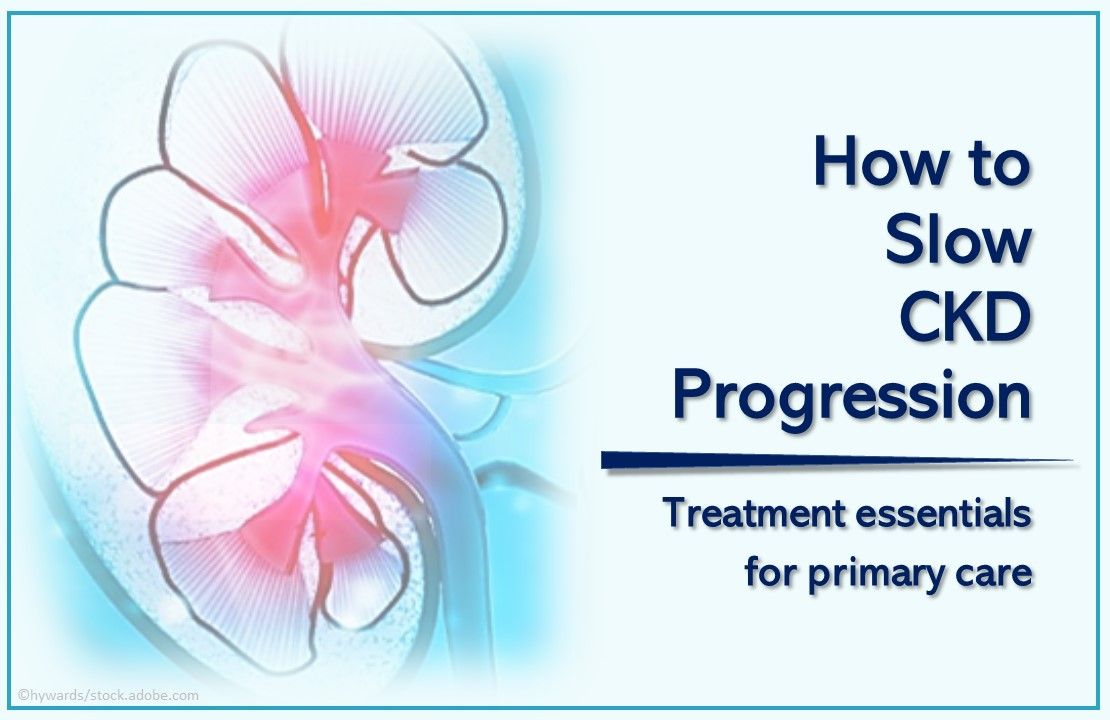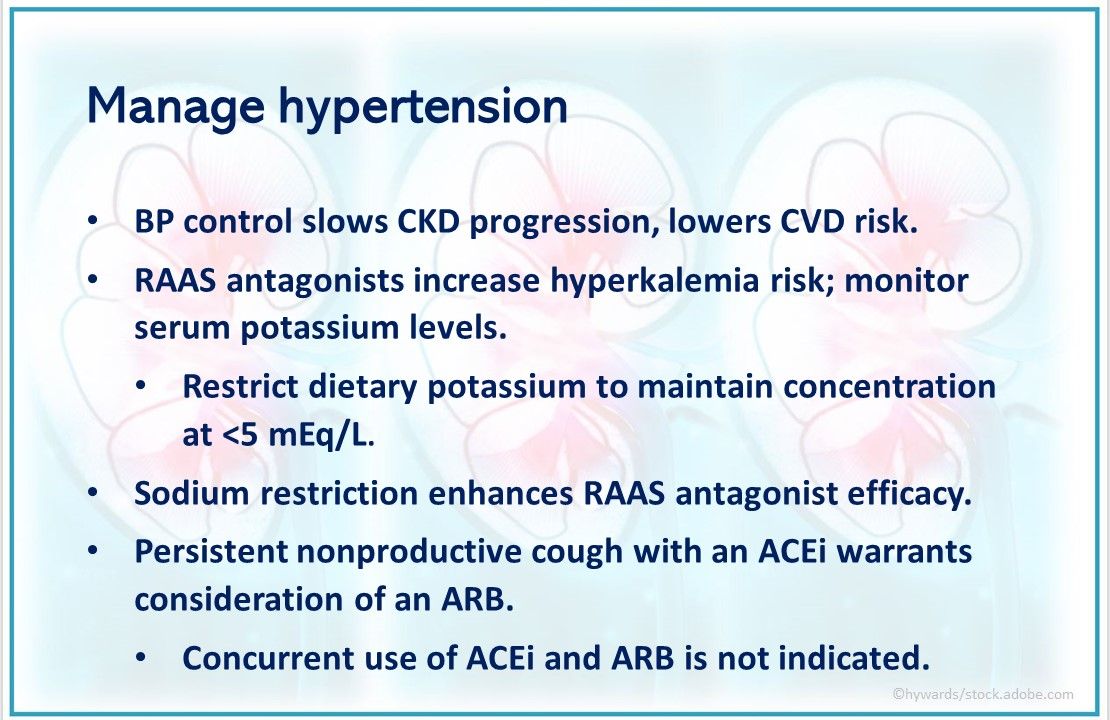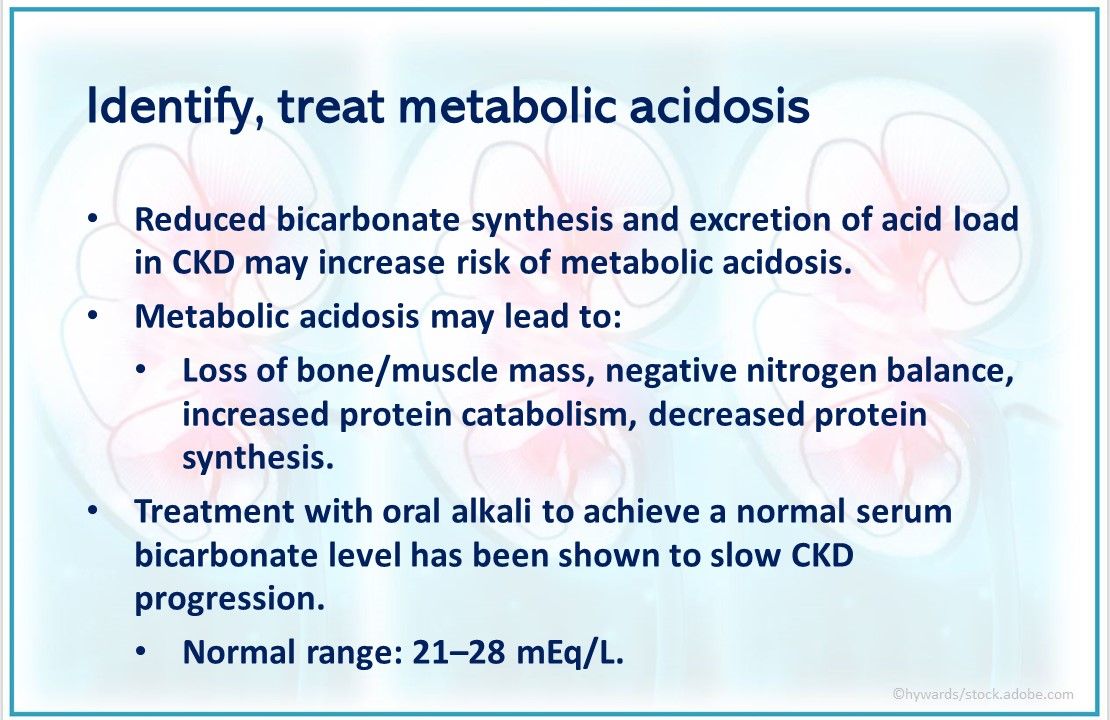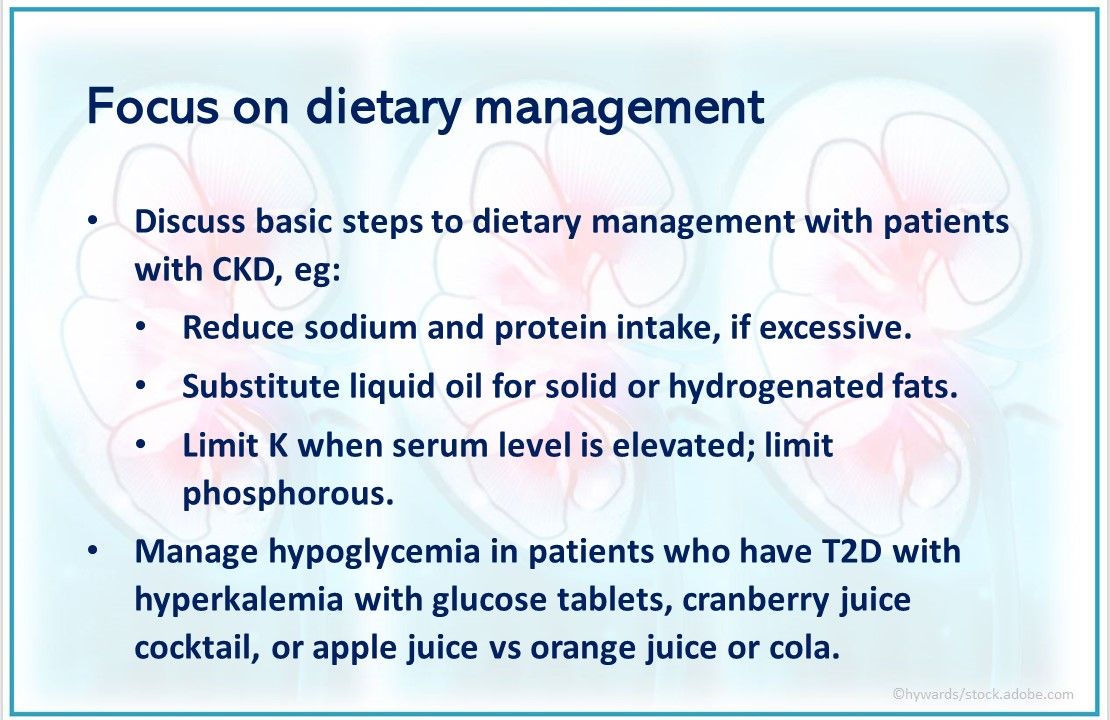Patients with chronic kidney disease (CKD) are treated with the goals of slowing progressive loss of kidney function and preventing or managing complications.
Essential elements of treatment include diabetes and hypertension management and reducing risk of cardiovascular disease. Guidance specific to primary care physicians, who treat the majority of patients, comes from the National Kidney Disease Program and the Kidney Disease Outcomes Quality Initiative and is summarized in the following slides.
Interventions for slowing disease progression. Interventions that delay CKD progression include hypertension management; use of a renin angiotensin aldosterone system (RAAS) blocker (angiotensin-converting enzyme inhibitor [ACEi] or angiotensin receptor blocker [ARB]) for hypertension and albuminuria; type 2 diabetes (T2D) control; and correction of metabolic acidosis. Avoidance of acute kidney injury (AKI) is a component of slowing CKD progression. Dietary management is another.
Manage hypertension. Blood pressure control slows CKD progression and lowers cardiovascular disease (CVD) risk. RAAS antagonists increase hyperkalemia risk, so serum potassium levels should be monitored. Dietary potassium restriction may be used to maintain potassium at <5 mEq/L. The efficacy of RAAS antagonists is enhanced by sodium restriction. If a patient has persistent nonproductive cough with an ACEi, consider an ARB. Concurrent use of ACEi and ARB is not indicated.
Reduce albuminuria. In albuminuria, elevated protein levels within kidney tubules may exacerbate kidney damage. Decreased albuminuria is associated with slower CKD progression, especially in patients with T2D. The goal of treatment is to reduce or stabilize the amount of albumin lost in the urine. RAAS blockers are recommended for all patients with CKD, but current evidence supports their use primarily for patients who have albuminuria. Cessation of tobacco smoking also may lower albuminuria.
Control type 2 diabetes. Good control of newly diagnosed T2D may delay CKD onset or slow its progression or both. Tight control of T2D of long duration, however, may not slow CKD progression. Targets for glycemic control should be individualized: a target A1c of ~7% has been recommended, with higher targets for patients with a limited life expectancy or an elevated risk of hypoglycemia. Dose adjustment of medications may be needed.
Identify, treat metabolic acidosis. Reduced bicarbonate synthesis and excretion of acid load may increase the risk of metabolic acidosis in patients with CKD. Metabolic acidosis may result in loss of bone and muscle mass, negative nitrogen balance, increased protein catabolism, and decreased protein synthesis. Treatment of CKD–associated metabolic acidosis with oral alkali to achieve a normal serum bicarbonate level (normal range, 21–28 mEq/L) has been shown to slow CKD progression.
Avoid acute kidney injury. Patients who have CKD are more susceptible to nephrotoxic agents than those who do not and are at high risk for AKI, which may accelerate CKD progression. To lower the risk, avoid the use of nephrotoxic medications and treatments that may exacerbate kidney damage: NSAIDs, quinolones, beta lactams, and sulfonamides. Exercise caution with intravascular administration of iodinated contrast agents and consider alternative imaging techniques.
Focus on dietary management. For effective dietary management of patients with CKD, discuss the following basic steps: reduce sodium intake; reduce protein intake, if excessive; substitute liquid oil for solid or hydrogenated fats; limit phosphorus, including added phosphorus; and limit potassium when serum level is elevated. To manage hypoglycemia in patients who have T2DM with hyperkalemia, use glucose tablets, cranberry juice cocktail, or apple juice rather than orange juice or cola.
Reduce risk for CV complications. Patients with CKD are at high risk for CVD, the leading cause of mortality in CKD. Primary care physicians are advised to initiate statin-based therapy in patients aged ≥50 years based on risk factors for CVD vs on LDL-C levels. Follow the recommended “fire and forget” strategy: exclude remediable causes of secondary dyslipidemia; assess for risk factors that warrant lipid-lowering therapy and initiate when indicated; and do not remeasure LDL-C unless results would alter management.
For additional articles in this collection on chronic kidney disease, please see:
Chronic Kidney Disease Diagnosis in Primary Care
Defining Chronic Kidney Disease in Primary Care: Management, Complications, Risk, Referral
Finerenone Shows Potential to Delay Afib Onset in Patients with CKD, T2D
Diabetes Management in CKD: 10 Top Takeaways from KDIGO 2020
SGLT2 Inhibitors Enter Vast Treatment Void for High-risk CKD Patients












